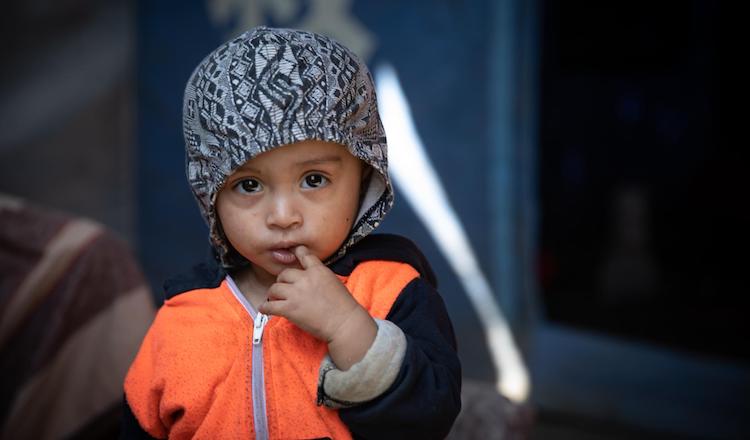By Radwan Jakeem
NEW YORK (IDN) — UN Children’s agency UNICEF has pledged to continue to support children and families facing humanitarian crises across the globe in 2023. “Today, there are more children in need of humanitarian assistance than at any other time since the Second World War,” says UNICEF.
Worldwide, children and their families are facing a deadly mix of crises, from conflict and displacement to disease outbreaks and soaring rates of malnutrition. Climate change is making these crises worse and unleashing new ones.
But while the situation is dire, it’s far from hopeless, says UNICEF. “We know how to reach the children at greatest risk and in greatest need. Whether it’s distributing winter clothing, providing safe spaces for displaced families or delivering treatments like Ready-To-Use Therapeutic Food (RUTF), UNICEF is on the ground —from Bangladesh to Yemen, from Haiti to South Sudan.”
Flexible funding from partners and donors is critical in enabling us to respond quickly—where and when families need help—while also preparing for future threats, it adds, pointing out to 11 emergencies where resources have fallen out.
South Sudan: Unprecedented flooding in South Sudan has taken a devastating toll on families. Crops have been destroyed, grazing spaces for cattle and other livestock have been submerged and families have been forced to flee their homes. With hunger and malnutrition on the rise across the flooded regions, some communities are likely to face starvation without sustained humanitarian assistance.
Yemen: After eight years of conflict, the systems that Yemen’s families depend on remain on the edge of total collapse. More than 11,000 children have been killed or maimed since 2015, while conflict, massive displacement and recurring climate shocks have left more than 2 million children acutely malnourished and struggling to survive.
Haiti: Political turmoil, civil unrest and gang violence, crippling poverty and natural disasters: A deadly combination of threats already posed a massive challenge for families in Haiti. But a surge in cholera in 2022 is posing yet another risk for children’s health – and their lives.
DR Congo: An escalation in armed conflict and recurrent outbreaks of deadly diseases are taking a heavy toll on millions of children in the Democratic Republic of the Congo. The country hosts the second-highest number of internally displaced people in the world. The cramped conditions in the camps that families are living in are fraught with danger for children, who face an increased risk of violence and disease.
Pakisan: The rains that brought historic flooding to much of Pakistan in 2022 may have ended, but the crisis for children has not. Months after floods ravaged the country, vast swathes of cropland and villages remain under water, while millions of girls and boys are still in need of immediate lifesaving support. Around 8 million people are still exposed to floodwaters or living close to flooded areas. Many of these families are still living in makeshift tents alongside the road or near the rubble of their home – often in the open, right next to contaminated and stagnant water.
Burkina Faso: Political fragility, the impacts of climate change and economic and health crises have contributed to the internal displacement of around 1.7 million people in Burkina Faso – 60 per cent of them children. The anxiety, depression and other stress-related problems associated with displacement can take a lifelong toll on children’s emotional and physical health.
Myanmar: Deepening civil conflict in Myanmar continues to impact children and their families, with some 5.6 million children in need of humanitarian assistance. Attacks on schools and hospitals have continued at alarming levels, while grave violations of child rights in armed conflict have been reported. The conflict has undermined the delivery of child health services, including routine immunization, threatening to take a long-lasting toll on children’s health and well-being.
State of Palestine: Children in the State of Palestine continue to face a protracted protection crisis and an ongoing occupation. Around 2.1 million people – more than half of them children – now require humanitarian assistance.
Bangladesh: As the Rohingya refugee crisis enters its fifth year, Bangladesh still hosts hundreds of thousands of Rohingya refugees who settled in the Cox’s Bazar District after fleeing extreme violence in Myanmar. While basic services have been provided in the camps, children still face disease outbreaks, malnutrition, inadequate educational opportunities and other risks like exploitation and violence.
Syria: More than a decade of humanitarian crises and hostilities has left children in Syria facing one of the most complex emergencies in the world. Two thirds of the population require assistance due to the worsening economic crisis, continued localized hostilities, mass displacement and devastated public infrastructure. The conflict has seen one of the largest education crises in recent history, with a whole generation of Syrian children paying a devastating price.
Kenya: Four failed rainy seasons in a row have left Kenya experiencing its worst drought in 40 years. Without water, crops cannot grow, and animals and livestock die. The resulting loss of nutritious food, combined with poor sanitation, has left hundreds of thousands of children requiring treatment for wasting. Children with wasting are too thin and their immune systems are weak, leaving them vulnerable to developmental delays, disease and death. [IDN-InDepthNews — 03 January 2023]
Image credit: UNICEF/UN0579998/Lateef


